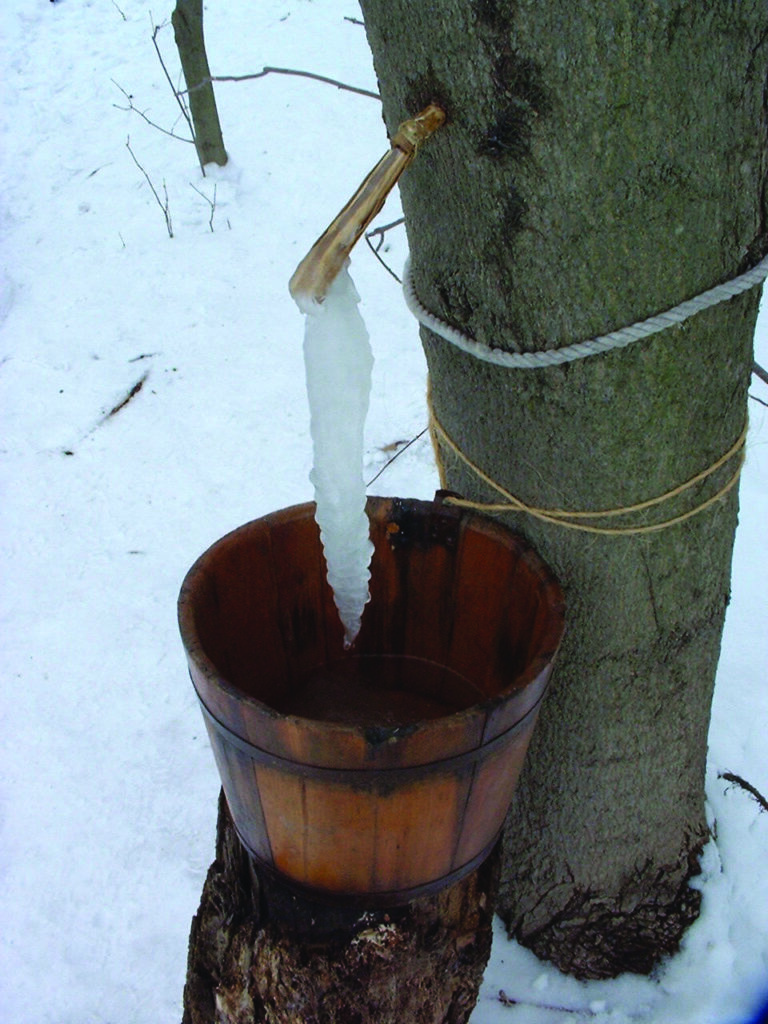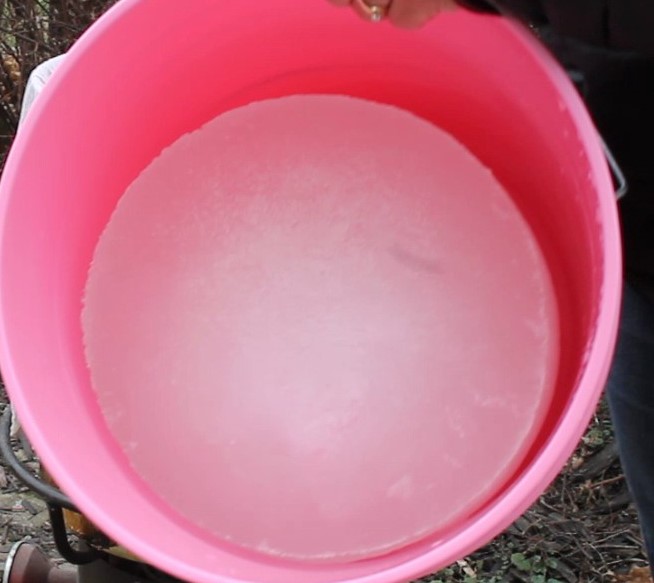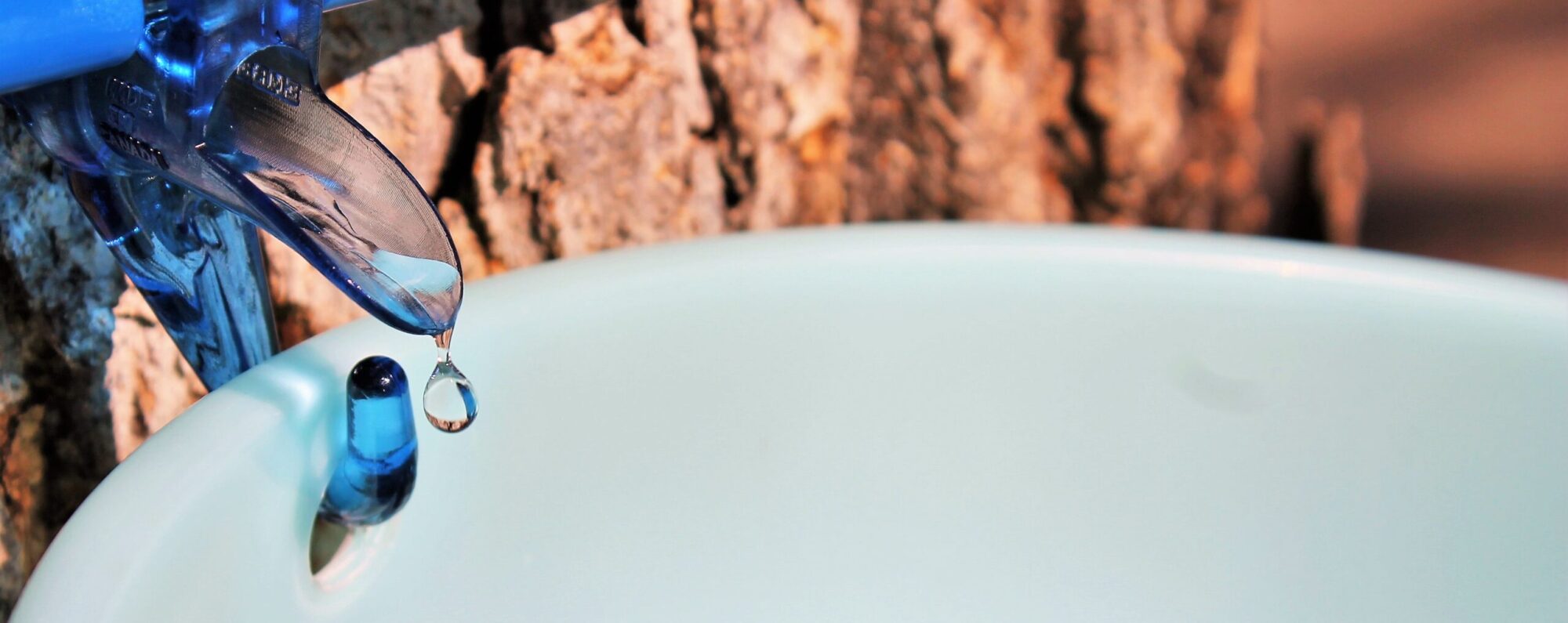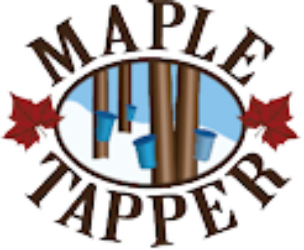
Have you been wondering if it would be faster to freeze the water in your sap instead of boiling it down? We’ve all found our sap buckets with chunks of ice after a really cold night and we know that ice is mostly water, so why not just toss it out and save time evaporating it during boiling? Early sugarmakers did just that mostly because they didn’t have access to heavy-duty tools that would stand up to high heat. Large modern day sugarmakers are using freeze concentration in their operations to save time. If you’d like to try it out this season, this article will highlight the hows and whys of freezing sap and we’ll begin with this author’s unscientific freeze experiment.
Because necessity is the mother of invention . . .
I tried my very own freeze experiment in 2015 mostly because it was an abysmal sap year and I wanted to boil all my sap at once at the end of the season. I only gathered about 20 gallons of sap in 2015 so as I collected it, I filtered it, and froze it in five-gallon-buckets. It was cold enough outside that we just put the buckets in the shade and banked them with snow. Sure enough a big block of ice formed in each bucket. When I was ready to cook, I let the buckets thaw a bit and poured the liquid into my pot. As you can see from these pictures this left a lot of ice in the bucket. I boiled my syrup as usual and ended up with the standard yield of about 40-to-1.

But while I was boiling my first batch of sap, those big chunks of ice melted. I just couldn’t help myself so I boiled these former ice chunks down and do you know what? I ended up with more syrup but it was probably closer to a 50-to-1 yield. So in my unscientific judgment, freezing did work somewhat to concentrate the sap but if I would have thrown out that ice, I would have lost about a half-quart of syrup!
Now I’m not saying it doesn’t have merit and if you can freeze your sap outside, you would use zero energy for at least part of your concentrating steps. One way to try this would be to use a multi-stage freeze/thaw method where you let the ice chunks melt, then pour off the liquid to boil, and then start the freeze/thaw/cook method over again.
One thing everyone agrees on, though, is you still must boil your sap to achieve the caramelized color and flavor we all love. Besides it has to be heated up for bottling anyway and there’s no way around that!
A more proven freeze method.
Beyond this backyard trial and error, the professionals have been working out a way to freeze the water in sap as it flows through the lines into the sugar shack. The upfront cost and set up of these systems is not really feasible for the hobbyist but it’s interesting to take a look at the method. Typically at the end of the mainline but before the storage tank, the sap is run through a refrigerated pipe. The water freezes, concentrating the sap which continues to flow through into the storage tank for boiling. The ice is melted and drained off.


SE Wisconsin. 40 taps, Silvers, vacuum, 400 RO. 50% water removed with RO. Freeze this concentrated sap in 3.5 gallon food grade pails. Remove 8” ice from slightly warmed up pails. This yields 35 brix before boiling. Best of all is this setup is almost foolish human with tooooo many projects proof. Thinking of selling wood fired evaporator and using propane burner. Brix tests vary but guesstimate I’m loosing 2% final yield. Your mileage may vary! Previous land ‘owners’ must have freeze concentrated before pottery boiled food era.